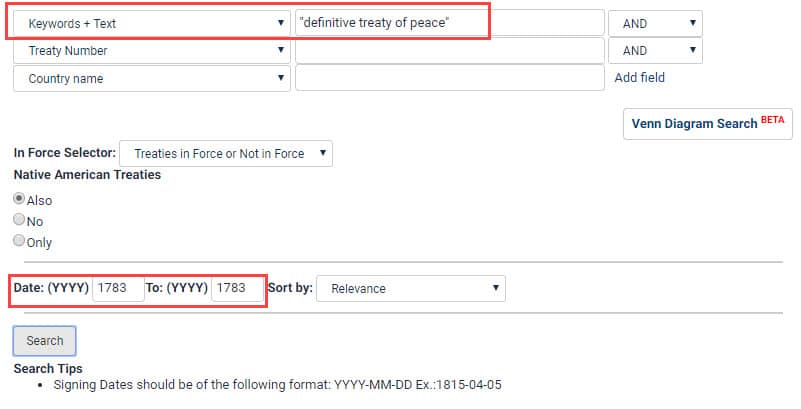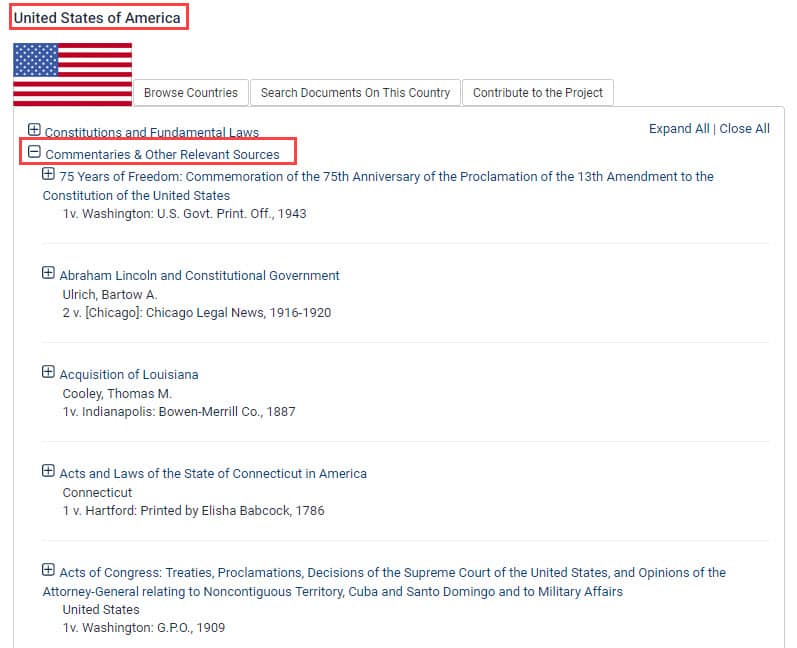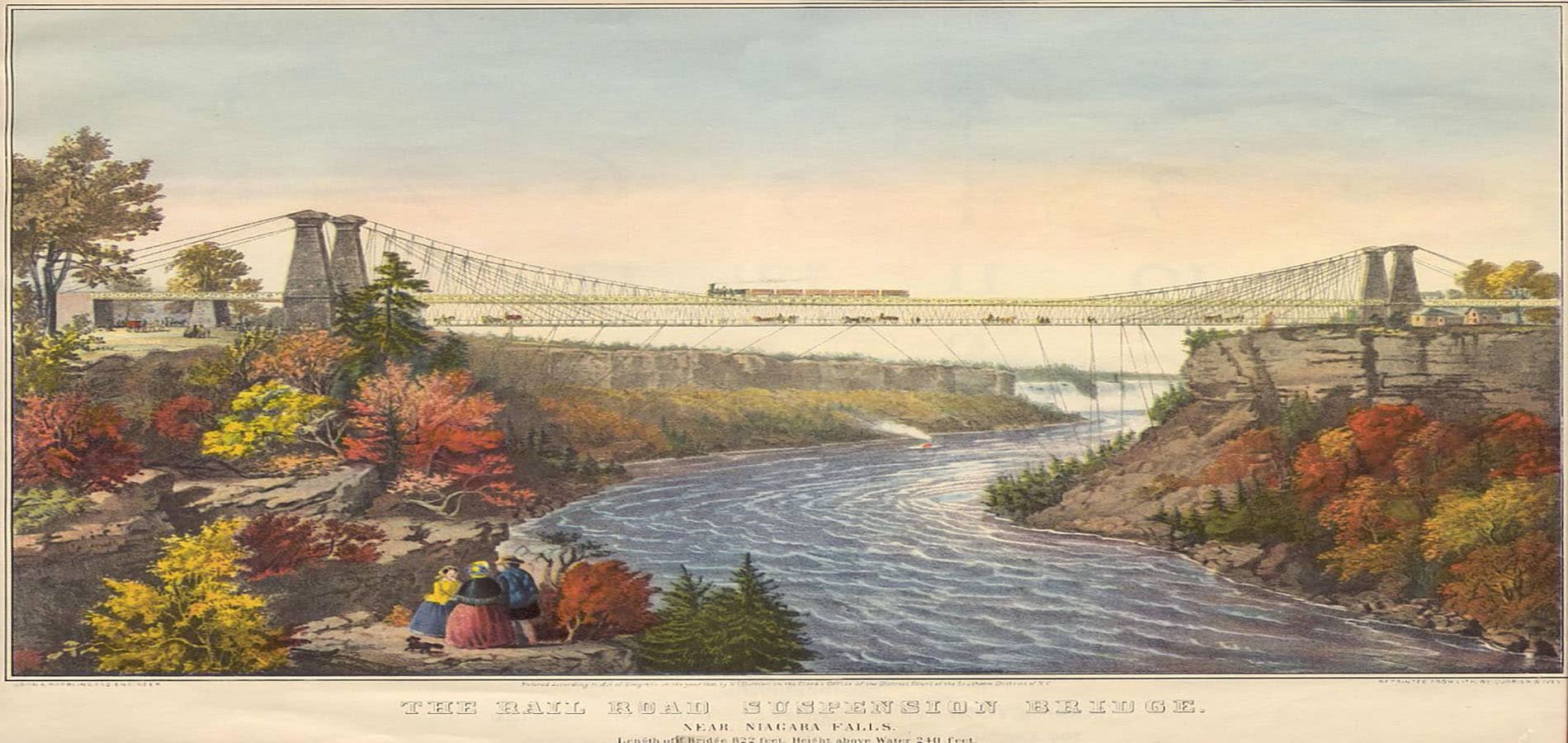The Treaty of Paris was signed in 1783 as a peace agreement between Great Britain and the United States of America to formally end the American Revolutionary War. Learn more about the evolution of the treaty with primary sources in HeinOnline.
Before We Get Started:
Don’t miss out! Make sure you have the databases we’ll be mentioning in this post. Follow the links below to start a trial today.
The Treaty of Paris
History of the Treaty
The American Revolutionary War began in 1775 when tensions increased between Great Britain and its thirteen colonies in North America. In 1781, General George Washington and his army surrounded and captured an estimated 9,000 British troops in Yorktown, VA, in what would become the last major battle of the war.
Following the crushing Yorktown defeat, members of the British government and public began to talk of peace. As a result, peace negotiations began in 1782 in Paris, with U.S. interests represented by Benjamin Franklin, John Jay, and John Adams. Initial peace negotiations led to the drafting of preliminary articles of peace, later approved in April of 1783 by the American Congress of the Confederation. In the following days, Congress declared a cessation of arms, and General George Washington gave his own orders to cease all hostilities.
When America’s independence was put forth as a stipulation of the final peace treaty, Great Britain refused, stalling the negotiations. It was not until the election of new Parliament members that British attitudes toward American independence changed. Newly elected British Prime Minister William Petty rationalized that the creation of an independent United States of America could be beneficial for England. The country stood to profit financially from a new American nation, he argued—the cost of managing thirteen distant colonies would be eliminated and Great Britain could create a lucrative trade partnership with the newly established nation.
Terms of the Treaty
Realizing these benefits, Great Britain made major concessions to the United States, including relinquishing land to expand the boundaries of the new nation. View the key terms of the Treaty of Paris below:
- Article I: Britain acknowledges the United States—namely the thirteen colonies— as “free, sovereign, and independent states” and relinquishes any British claim to their governments and properties.
- Article II: Establishes the boundaries of the United States and British American territory to avoid future dispute. Importantly, Great Britain surrenders its own land to expand the existing territory of the United States, which ultimately allowed for future expansion westward and southward.
- Article III: Grants fishing rights to American fisherman in specific bodies of water.
- Article IV: Recognizes the contracted debts which must be paid on both sides.
- Article V: Establishes that the Congress of the Confederation will recommend that states provide restitution for rightful owners of all confiscated land.
- Article VI: Holds that the United States will prevent the future confiscation of land.
- Article VII: Establishes perpetual peace between Great Britain and the United States, and holds that all hostilities regarding any matter should cease. Also requires Great Britain to peacefully withdraw its troops from the United States and requires both sides to return each other’s belongings, including slaves and prisoners of war.
- Article VIII: Allows Great Britain and the United States to have equal access to the Mississippi River.
- Article IX: Calls for previously captured territories be returned to their rightful sides.
- Article X: Requires ratification of the treaty on both sides within six months of its signing.
Westward expansion and later developments in U.S. history superseded many of the articles laid out in the treaty. Today, Article I remains the only article of the Treaty of Paris still in force.
Finding the Treaty in HeinOnline
The definitive peace treaty, known as the Treaty of Paris, can be found in HeinOnline’s U.S. Treaties and Agreements Library. From the U.S. Treaty Index, enter the phrase “definitive treaty of peace” next to “Keywords + Text.” Limit the date range to the year 1783 and click “Search” to bring up the Treaty of Paris as the only result.

Discovering Primary Sources on the Treaty
To find primary sources relating to the Treaty of Paris and other essential documents regarding the formation of the United States, users may navigate to HeinOnline’s World Constitutions Illustrated database. World Constitutions Illustrated enables legal scholars to research the constitutional and political development of every country in the world, including the United States. It includes not only the current constitution for every country, but also substantial constitutional histories, constitutional periodicals, thousands of classic books, and scholarly articles.
For example, the title Revolutionary Diplomatic Correspondence of the United States holds a wealth of documents relating to the peace negotiations, including original correspondence and journal entries from U.S. representatives Franklin, Adams, and Jay. Notable entries include:
- John Adams’ November 1782 journal entry noting the signing of the preliminary articles of peace.
- John Adams’ September 1783 letter to Congress informing its members of the signing of the Treaty of Paris.
- A letter to Congress from Adams, Franklin, and Jay, also in September 1783, formally announcing that the definitive Treaty of Paris had been signed.
To find the title in World Constitutions Illustrated, navigate to the home page of the database. Select the United States of America from the drop-down list of countries. Click “Commentaries & Other Relevant Sources” and scroll to find Revolutionary Diplomatic Correspondence of the United States.

Many other relevant titles can be found in the same listing, including:
- American Archives: Fifth Series. Containing a Documentary History of the United States of America from the Declaration of Independence, July 4, 1776, to the Definitive Treaty of Peace with Great Britain, September 3, 1783
- American Independence; The Interest and Glory of Great Britain
- Diplomatic Correspondence of the United States of America, from the Signing of the Definitive Treaty of Peace, 10th September 1783, to the Adoption of the Constitution, March 4, 1789
- American Remembrancer; or, an Impartial Collection of Essays, Resolves, Speeches, &c. Relative, or Having Affinity, to the Treaty with Great Britain
Do you enjoy learning about highlights in history? Are you eager to catch up on current events? Perhaps you’d rather dive into fun, random subjects like Star Wars, drones, turtles, or circus elephants? The HeinOnline Blog posts about these topics and more. Hit the Subscribe button to stay in the loop.
Don’t forget to connect with us on our social media platforms: Facebook, Twitter, Instagram, and YouTube.



